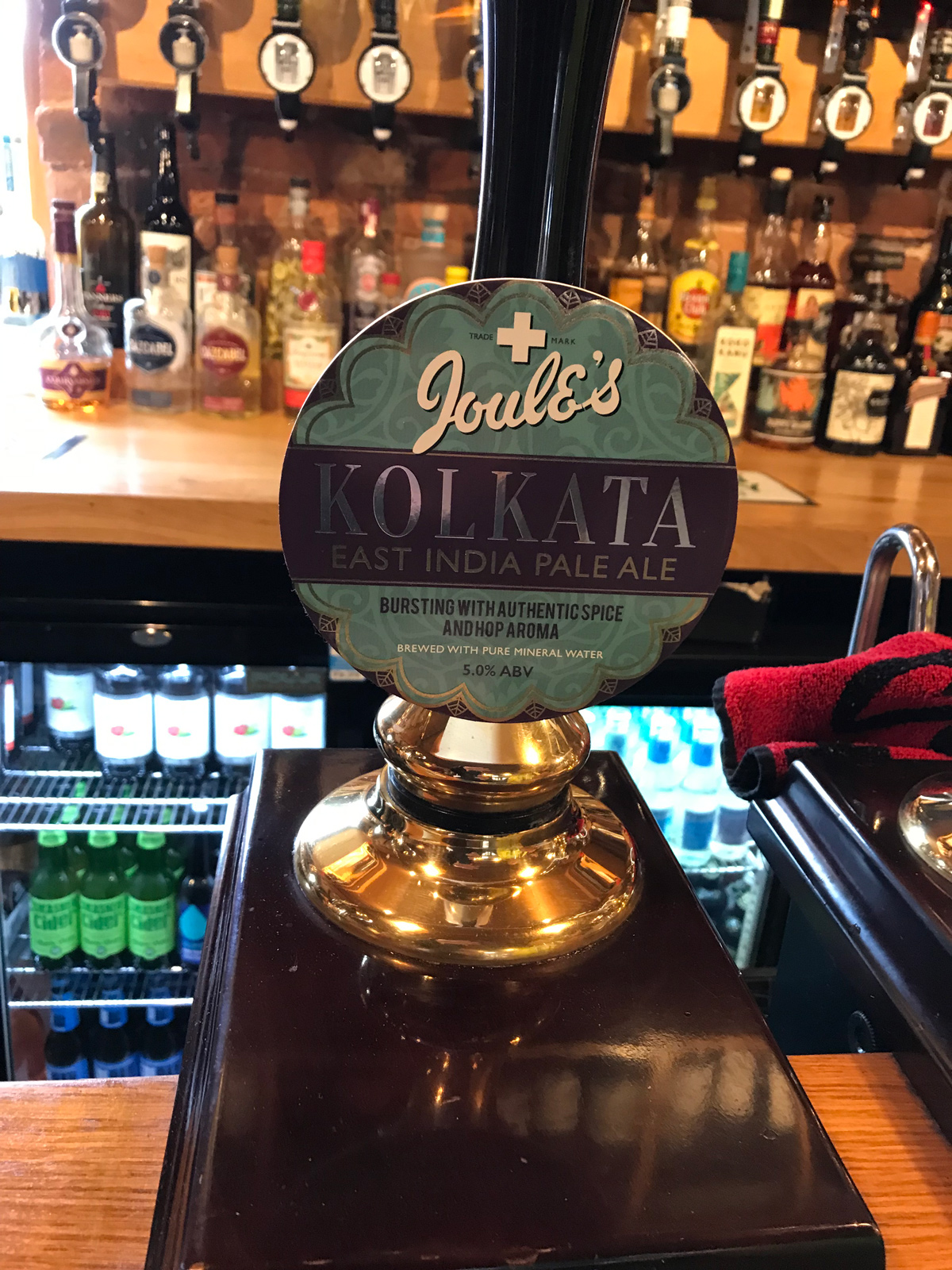How does one make sense of Robert Clive?
A boy from a little-known corner of England, with a troubled childhood and with personality problems that dogs him throughout life, who regularly defeats seasoned generals in a distant land without any formal military training, amassing for himself a dubious fortune and laying the ground for the mighty British Empire in India.
Ultimately, Clive put an end to his own story, committing suicide by slitting his throat at the age of forty-nine. He left behind a fascinating life-ark and a legacy that is debated to this day.
Trying to piece together this man of many parts took me from London to small towns in rural Shropshire and Wales where the Clive legacy still holds tall.
I visited where Clive was born, where he was baptized, where he is (allegedly) buried, the schools he attended and was thrown out from, the markets he terrorized as an unruly adolescent…. before he stepped foot in India and changed both his own and his country’s fortunes.
Why Robert Clive is called “Clive of India”, which were the pivotal battles he won to establish British rule in India, how he was both a victorious soldier and an opportunist and extortionist, to what extent he enriched himself and his family and whether his bouts of depression and opium addiction ultimately led to his suicide….covering these topics would be a book in itself (and enough have been published already).
Instead, read this like a travelogue in pursuit of Clive’s touch-points and trying to understand the man – with the descriptions of places I visited, the people I met and things I saw.
Clive’s London Connections
The best way to make sense of Clive’s life is to start at the end and work towards the beginning. So, I began by visiting Clive’s bronze statue at Whitehall, bang in the middle of London’s power mile, and fittingly adjacent to the old India Office buildings which are now the Commonwealth offices.
Clive stands high on a pedestal, in arrogant mid-stride, the base of his statue etched with bronze reliefs celebrating his India war successes ; the siege of Arcot, the Battle of Plassey, the Treaty of Allahabad.
In recent times this statue has turned controversial, with activists believing it glorifies colonialism and demanding its removal . I personally do not agree, as in my view history is what it is, and previous deeds cannot really be contextualized in today’s morality. But then, I’m aware there are different views…
Just a half hour walk from Clive’s Whitehall statue is the leafy and upscale Berkeley Square. 45 Berkeley Square was Clive’s London address, and this was where he had committed suicide on November 22, 1774 at the young age of forty-nine.
Clive’s original terraced home still exists, with a blue English Heritage plaque announcing the Robert Clive connection. These homes are super-fashionable, and were among the first to be built around the square with bricks made on the spot from the earth dug from Berkeley Fields.
Clive had bought it in 1761, paid for by the loot he amassed after his victory at the battle of Plassey in 1757. He was thirty-six years old at the time, not bad for a person who had left the shores of England a penniless teenager some years earlier.
Berkeley Square today is lined with smart Ferrari showrooms and gourmet restaurants (including Benares fine dining; Clive’s India connection cemented as take-away curry…). Clive’s ex-home faces an elegant, sun-dappled park with ancient trees. Would this have been the last scenes he saw as a he put a put a pen-knife to his own throat in desperation to end it all?
A Journey To Shropshire To Meet The Young Clive…
Having seen where the Clive story ended, it was time to journey to the beginning. Clive started his life in Market Drayton, a small town in rural Shropshire in the West Midlands, bordering Wales. It was here that I headed next.
And, I was lucky in having two excellent local mentors in Julia and Chris, who knew everything about everything. These experts would show me Clive country; where he was born, studied and grew up and finally returned in a coffin to be interred.
Julia had told me where to stay; the smartly refurbished Bears Inn Hotel in the village of Hodnet. After an uneventful three hour drive up from London, I checked in to the hotel by mid-afternoon and decided to take a walk around the village.
Every second home in Hodnet was a black and white Tudor style house, giving the village a decidedly historical air as if time had stood still. While walking past the small village shop which also doubled as the post office, i read the unexpected – “Proprietor name Chetan Kayani” – and I knew I had to stop for a chat.
Entering the Hodnet Village Store was a blast from the past. Little bells tinkled a welcome as I pushed open the door. All the customers knew each other, and a lady had prepared pastries for everyone. The young owners Chetan and Kiran Kayani stood behind the counter… “Hello Karen, hello Jack, going somewhere for the school holidays?”.
I wondered whether the Kayani’s were aware of the irony of reverse migration; of Clive being there, and they being here. They hadn’t heard of Clive, and were dismissive of the idea that Indians may want to visit here…”Nobody knows Shropshire. Only old people come. If you get Indians here they would ask why they’re being shown gardens they can see even in Himachal”. So much for my passion project!
The next morning I was joined by Julia and Chris, and we set off on Clive’s trail. The first stop was Styche Hall, where Clive was born. We entered the flat rural parishes of Shropshire, driving on single-lane unnamed roads just wide enough for our car and hoping for no on-coming traffic, specially those massive tractors with rear wheels the height of a grown man.
Styche Hall, Clive’s birthplace
Styche Hall was the Clive family estate; a big three-floored mansion in the countryside. Robert Clives’ father – Richard Clive – was the local Lord of the Manor, owning this rural estate and the adjoining fields.
Styche Hall has now been converted in to residential flats, and so entry is prohibited. We were restricted to parking in the fields a good distance away among the sheep, looking at Clive’s birthplace from afar. Styche Hall seemed so remote and isolated, with a kind of brooding presence in the middle of nowhere. It must have been even more inaccessible when Clive was born here.
Clive’s father was a small time lawyer, and the family regularly struggled for money. Though ownership of such vast lands should have meant a comfortable life, in the impoverished Shropshire of the time this was not so. Richard Clive was known to have a violent and uncontrollable temper, and the young Robert – a hyper-active and temperamental child – had to fend for himself in this remote setting. I wondered what dark secrets those secluded mansion walls held, and how they influenced the man Robert Clive became.
Moreton Say village ; Saint Margaret’s Church
After Styche Hall, we reached the village of Moreton Say; population four hundred.
Besides a school, a community hall, and a few scattered cottages, the village hosts a small parish church that connects it forever to Robert Clive and India.
Saint Margaret’s church at Morteon Say was built in 1634, and was the Clive family church. A small plaque at the church entrance says “Robert Clive, Founder of the British Empire in India, baptized and buried in this church”.
We met the affable Chris Swathes, the churchwarden, who showed us around. The original baptismal font which was used to baptize the baby Robert Clive on October 2, 1725, was still in place. We climbed a set of weathered wooden stairs to a gallery where Clive’s family would have sat to view his being baptized. From here we had a view of the entire length of the small church, little changed from the days of Clive.
Chris walked towards the alter and an ancient wooden vicar’s door, where Clive is allegedly buried.
As Clive had died by suicide, which was frowned upon by Christianity, he was barred from being interred on consecrated ground. So, his family secretly moved Clive’s body from London to this church within days of his death, and only the close family knew of his secret burial. He was buried upright within the walls of the church, besides the vicar’s door.
I asked Chris whether he believed this was true. Macabrely, we stood in front of walled-in Clive and had a deep conversation. Chris held out his arms to prove that the walls were four feet thick; enough to hold an upright body.
“Surely, with today’s technology, we could scan the walls to solve the mystery, and check whether Clive is inside?”
“Yes, we could. That would be costly, who would pay?”
“Clive’s family should pay, they can afford it”
“Don’t mention Clive’s family, they never visit this church”
Which led us to the topic of the church’s upkeep. Given the small size of the village, the church’s daily congregations were just about ten people and so the building was difficult to maintain with tight funding. The church was showing its age, which was sad, given its enormous historical value.
Market Drayton; the trailer for what Clive was to become!
Next stop was Market Drayton, where Clive attended school and showed us glimpses of the personality he was due to become.
The Market Drayton Grammar School was a private school situated in the center of town just beside the main market and its shops. It was run by the adjoining St Mary’s church, with students being mainly the children of merchants and landowners, the upper strata of local society. While the church continues to thrive, the school itself no longer functions with the building – like so many other’s associated with Clive – converted in to residences.
The teenage Clive would walk two miles every day from Styche Hall to attend this school. I’m not sure whether he was welcome. Clive was an unruly teenager and a difficult pupil, leading his “gang of lads” in terrorizing the surrounding shopkeepers and even running an extortion racket.
Ultimately, Clive was expelled from school and his despairing father banished him from Shropshire, sending him to far-away India as a seventeen year-old employee of the East India Company.
Just beside the school and church, we explored the historic marketplace where Clive ran his extortion racket and terrified shopkeepers with his rowdy behavior. There is a famous story of Clive targeting a bakery when the owner refused to pay, by laying down on the street in pouring rain and using his body as a dam to funnel water in to the shop and cause it harm.
Julia had done her historical due diligence and identified the shop, which still exists as Billington Bakers, famous for its ginger-bread in Market Drayton. It was fascinating to stand on the same sloping cobbled road, beside the bakery entrance, and imagine the driving rain and gush of water that the quick-thinking Clive used to his advantage!
This “follow-the Clive-trail” Shropshire visit had been totally worthwhile and was made perfect by Julia and Chris. It was just a day trip from London, but a huge leap in discovering Robert Clive the person.
I had ample time during my drive back to London to reflect on what I heard seen and learned. What struck me most about the flat plains of Shropshire was its remoteness. Even today it is a little-visited, little-explored, largely rural and self-contained kind of place. Apart from the shopkeeper in Hodnet who had come from India, everyone I met in the hotels, churches, shops, cafes lived their life within an hour’s radius.
When Robert Clive had left this unexposed corner of England, his future was not expected to be bright. And yet, through sheer force of will he grabbed opportunities and vanquished powerful men in their own backyard in the heat and dust of India; stamping his authority in a completely alien culture and environment.
Clive has been called a soldier, businessman, statesman, looter, bully, politician. If in life he was a difficult man to understand, then in posterity even more so.
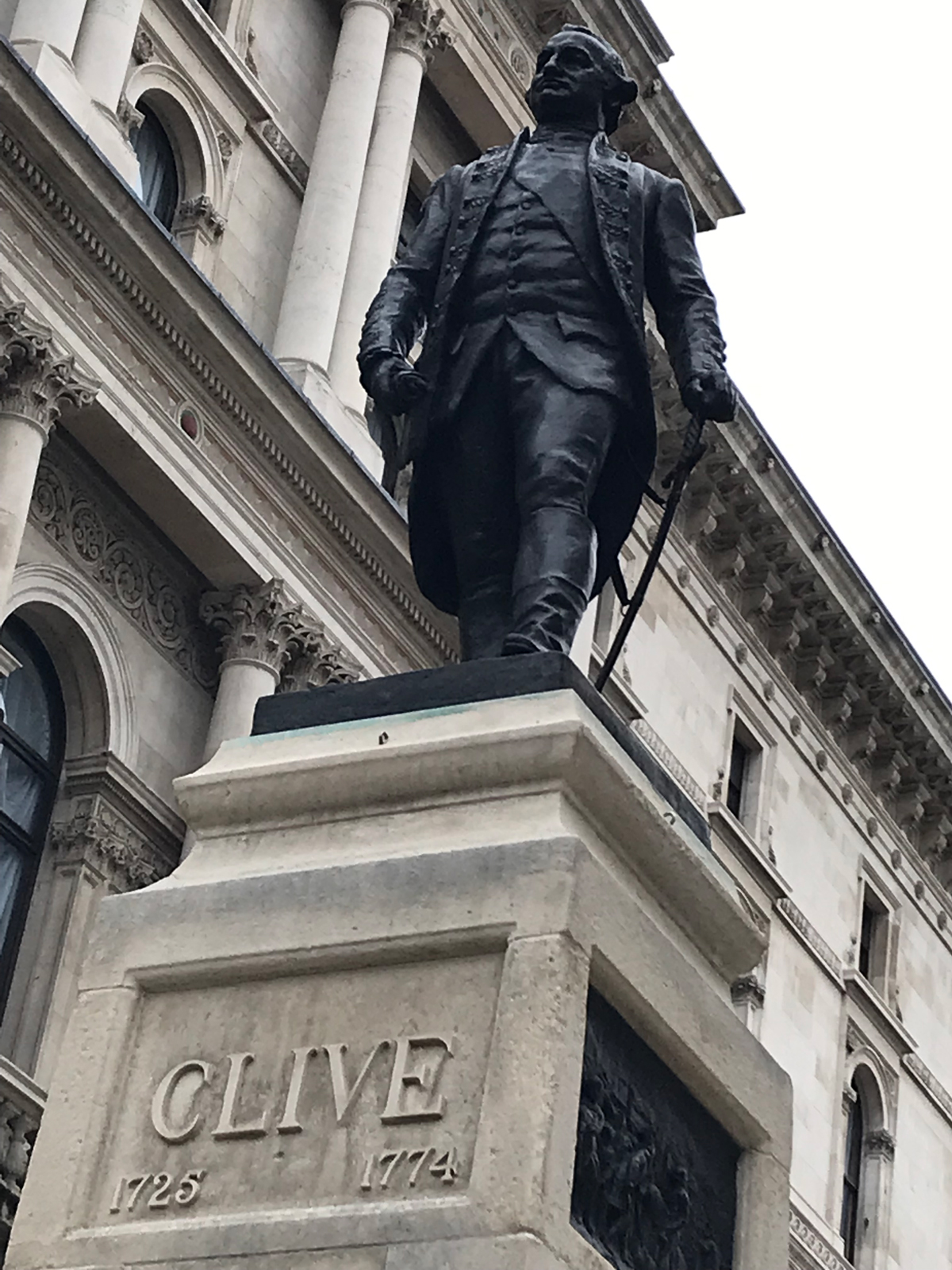 Robert Clive’s Statue In London’s Whitehall, in Striding, Arrogant Pose; A Complex Man With Many Strands to his Personality
Robert Clive’s Statue In London’s Whitehall, in Striding, Arrogant Pose; A Complex Man With Many Strands to his Personality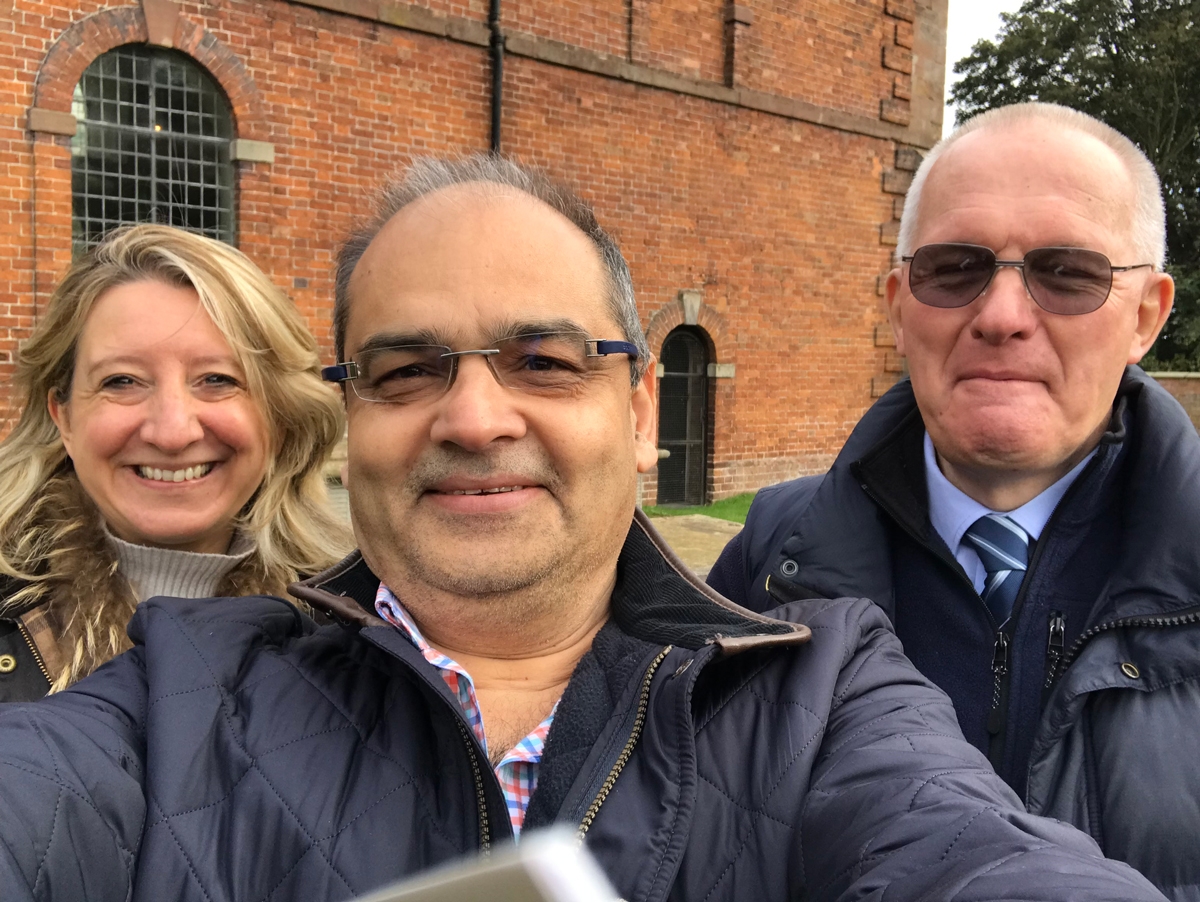 In and around Market Drayton in Rural Shropshire, With my Fellow Travellers in the Quest for Understanding Clive
In and around Market Drayton in Rural Shropshire, With my Fellow Travellers in the Quest for Understanding Clive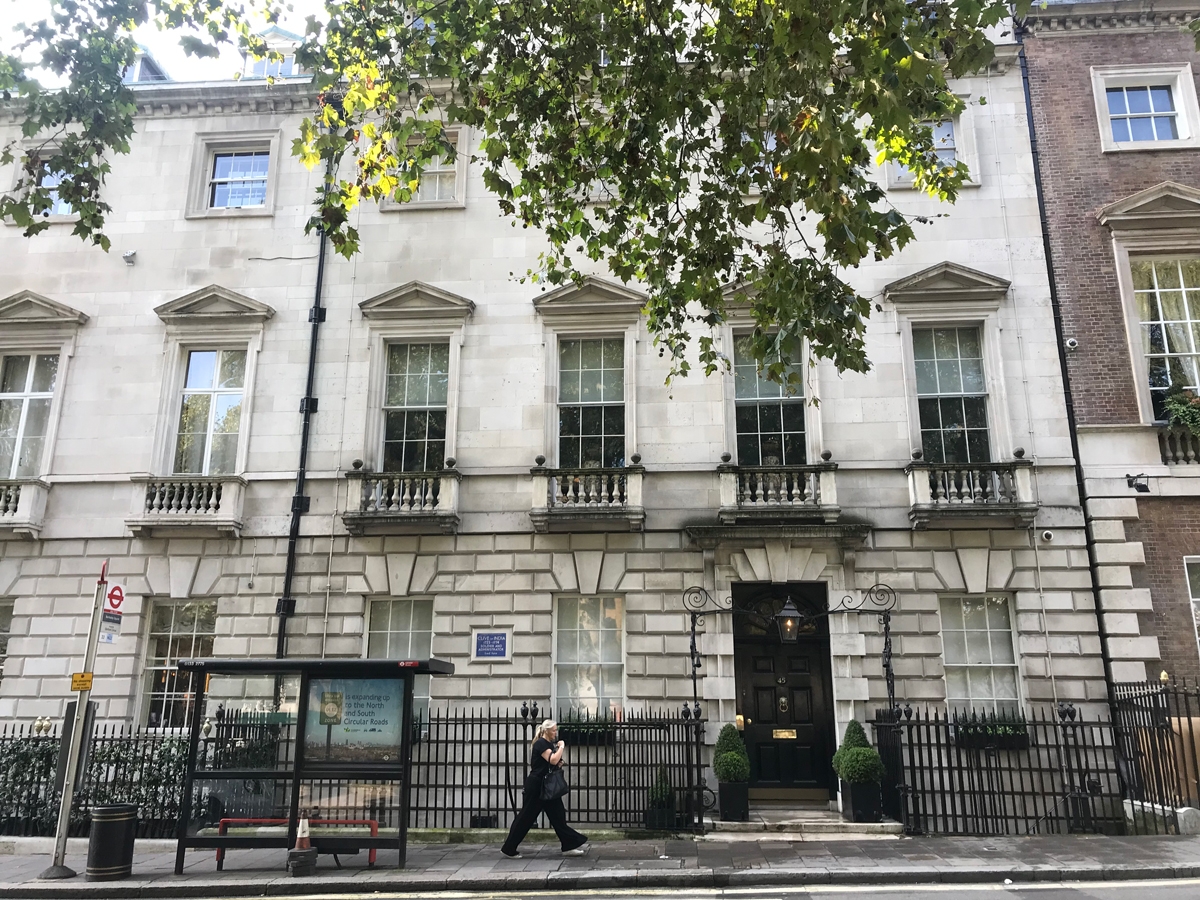 Clive’s Home in Upmarket Berkeley Square in London, Where He Committed Suicide. A Heritage Blue Plaque By The Door Confirms His Years of Stay
Clive’s Home in Upmarket Berkeley Square in London, Where He Committed Suicide. A Heritage Blue Plaque By The Door Confirms His Years of Stay Time Stands Still in Village Hodnet, With Architecture Straight Out of the Tudor Ages
Time Stands Still in Village Hodnet, With Architecture Straight Out of the Tudor Ages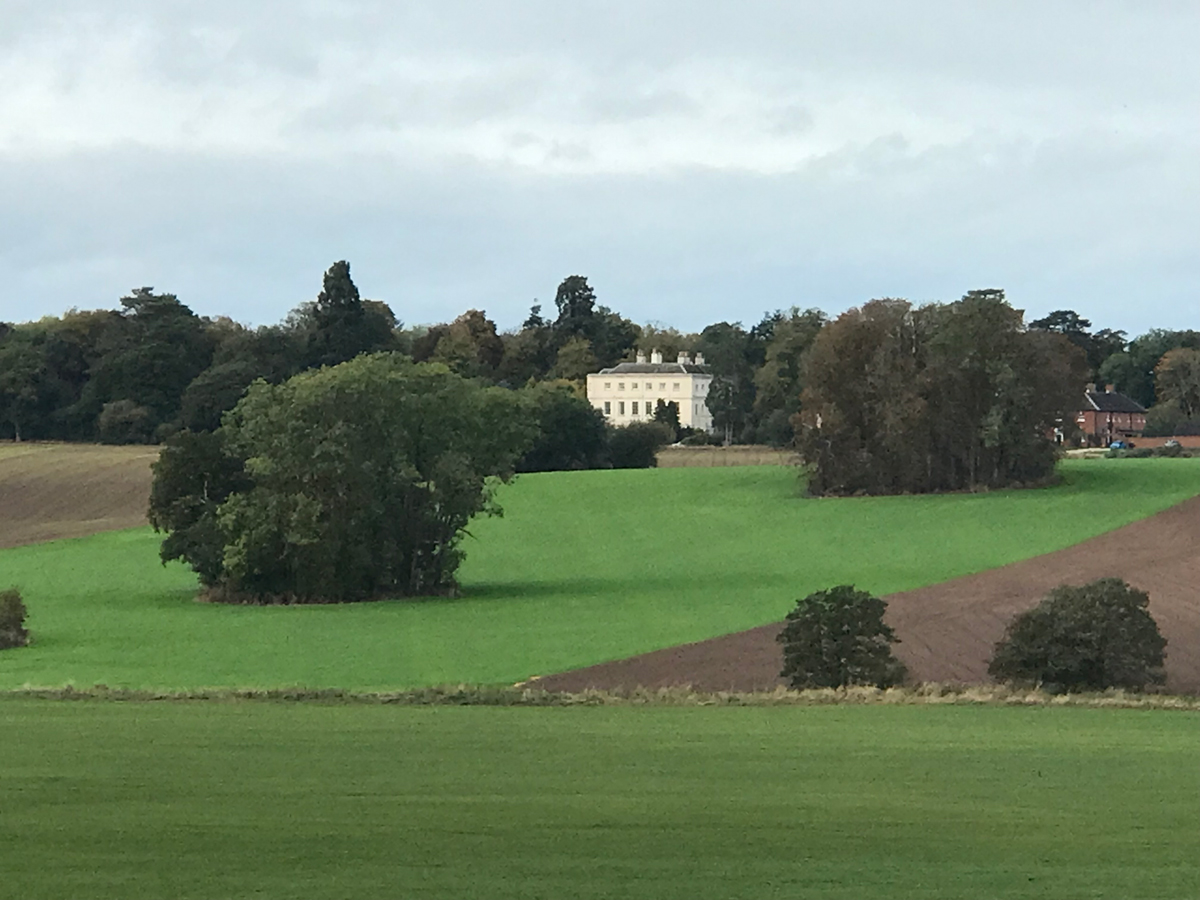 Styche Hall in the distance; the Clive Family Mansion and Adjoining Fields Where Robert Clive was Born
Styche Hall in the distance; the Clive Family Mansion and Adjoining Fields Where Robert Clive was Born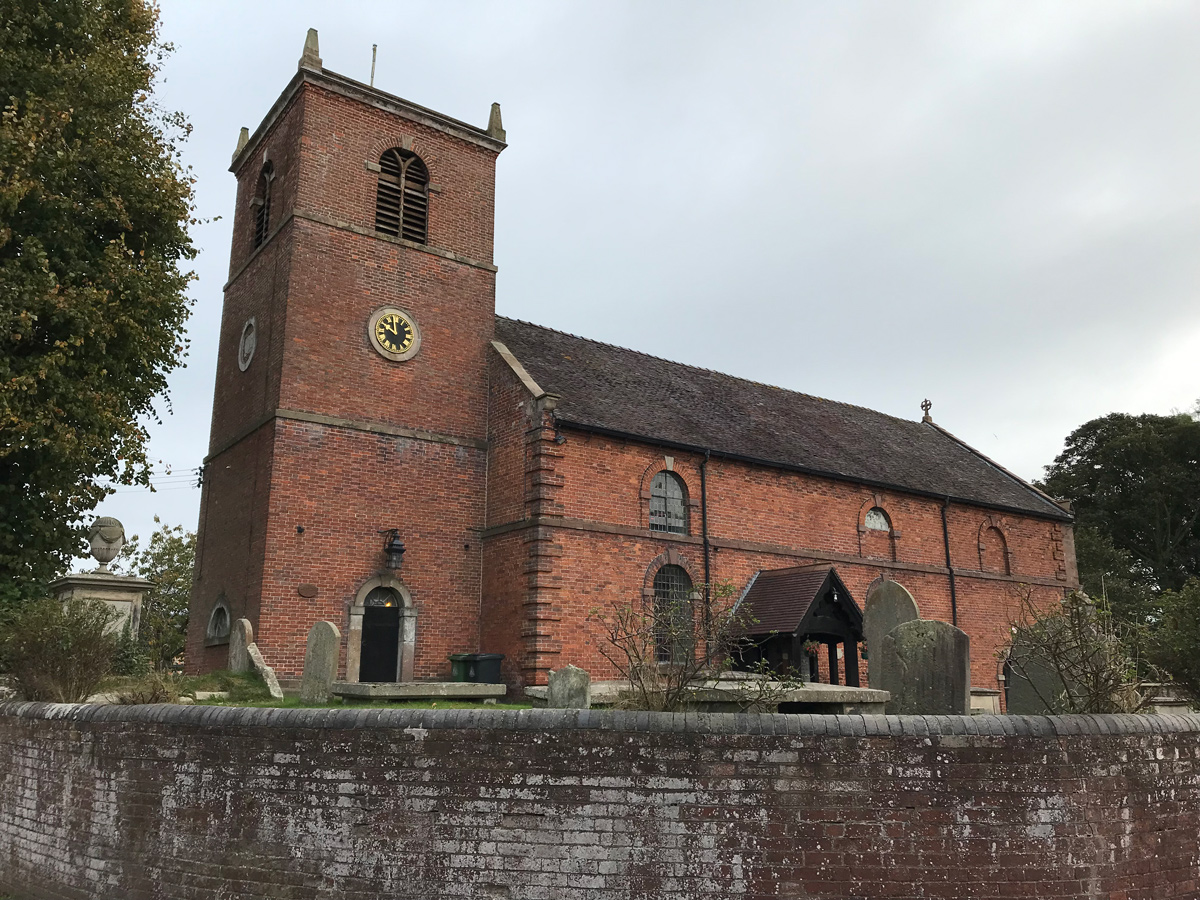 The Unassuming Saint Margaret’s Church at Moreton Say; Where Robert Clive was Baptized and is Also Buried
The Unassuming Saint Margaret’s Church at Moreton Say; Where Robert Clive was Baptized and is Also Buried 
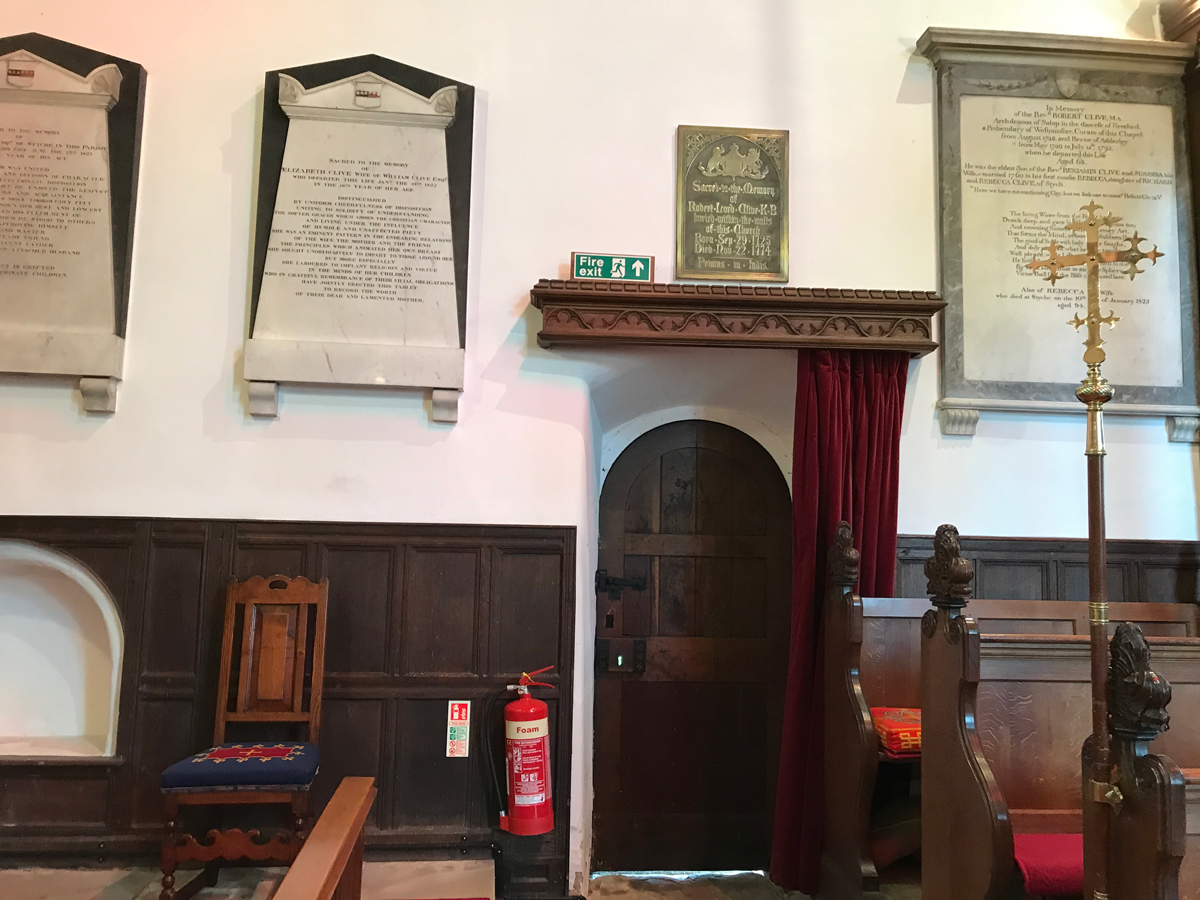 The Vicar’s Door; By Which Clive is Buried in the Wall
The Vicar’s Door; By Which Clive is Buried in the Wall 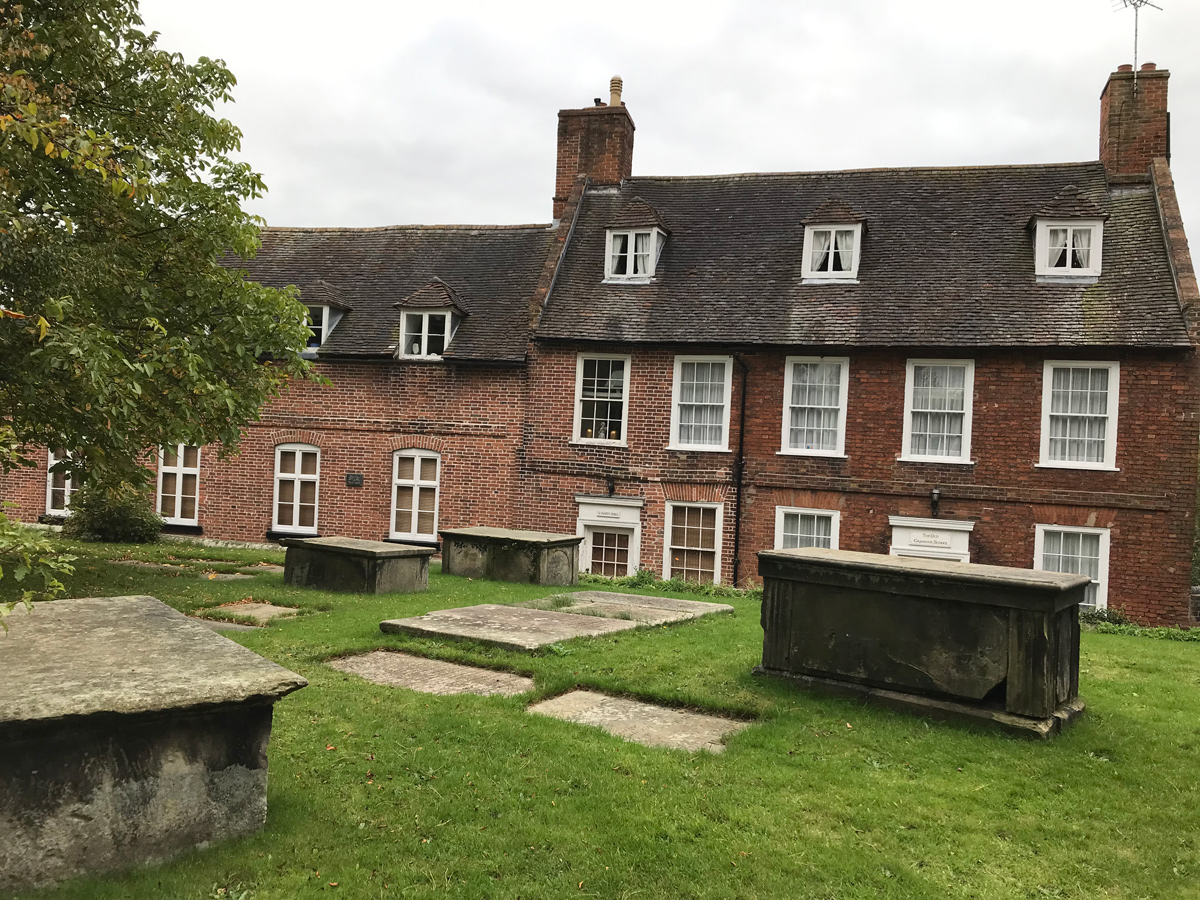 The Market Drayton Grammar School, where Clive’s Wild-Child Antics Got Him Expelled
The Market Drayton Grammar School, where Clive’s Wild-Child Antics Got Him Expelled 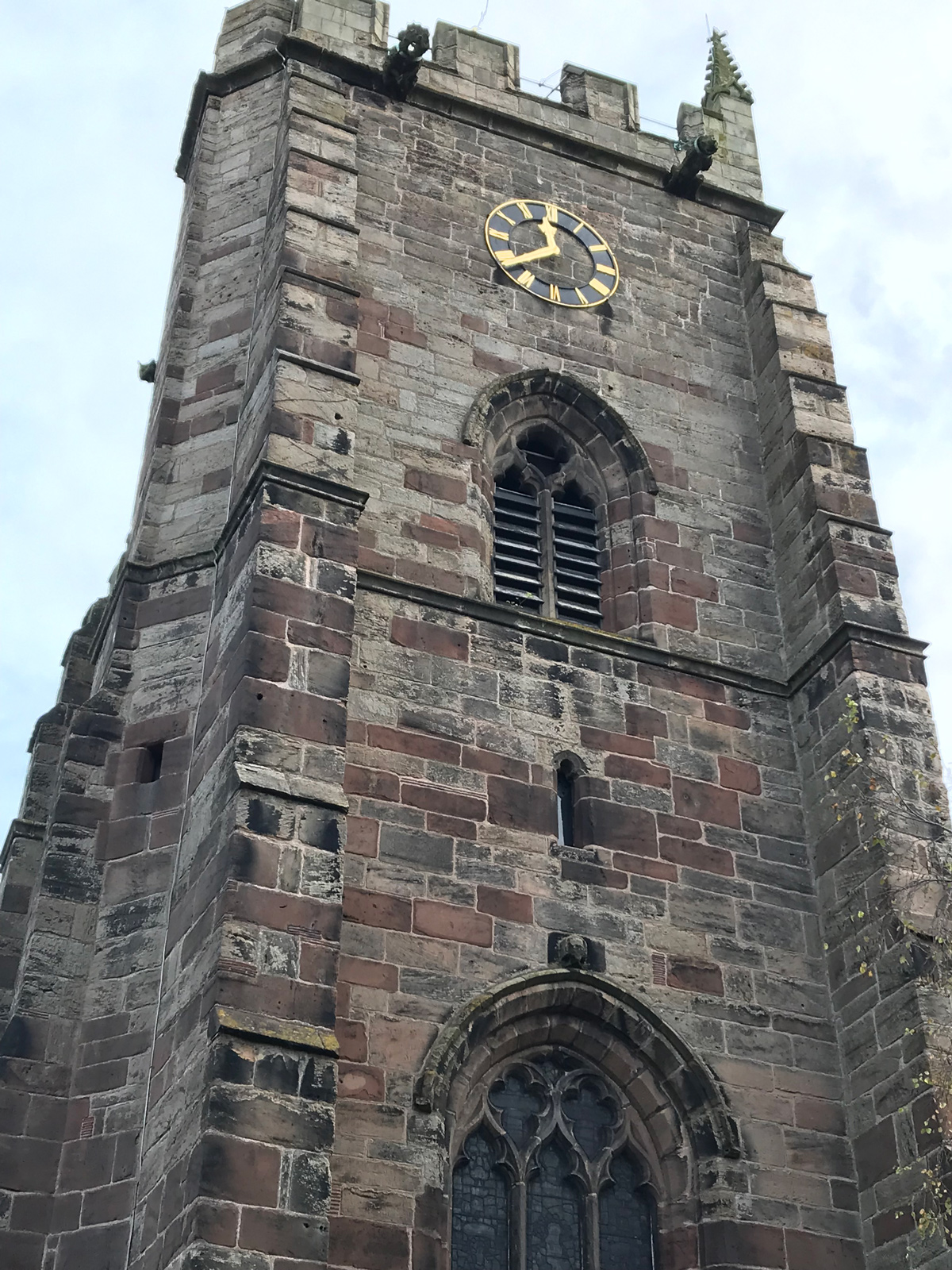 Those Two Jutting-Out Creatures On Top; A School-Going Clive Climbs The Church Tower and Sits on The Gargoyles To prove His Swagger in Market Drayton
Those Two Jutting-Out Creatures On Top; A School-Going Clive Climbs The Church Tower and Sits on The Gargoyles To prove His Swagger in Market Drayton 